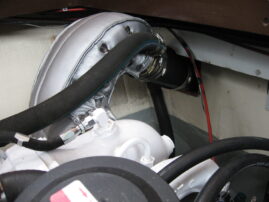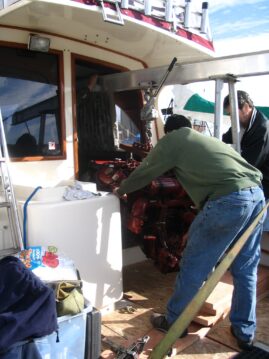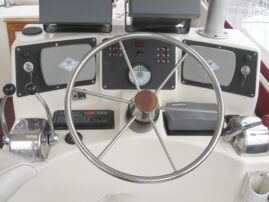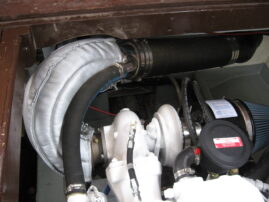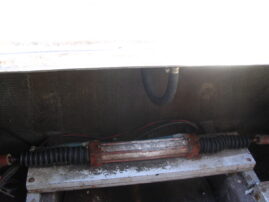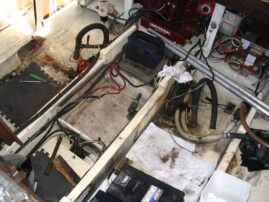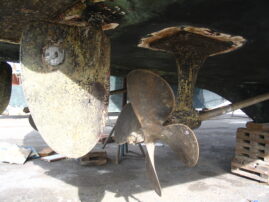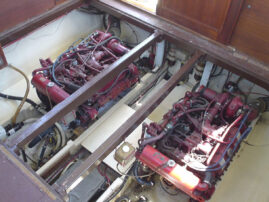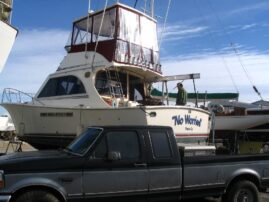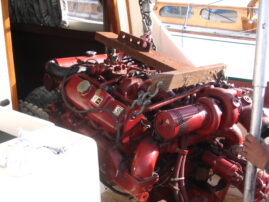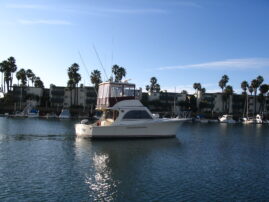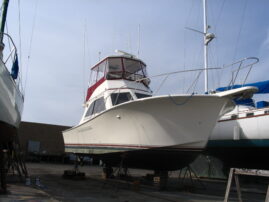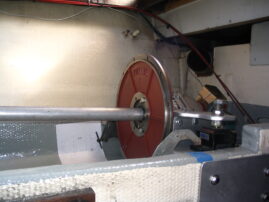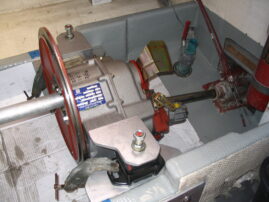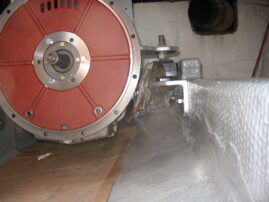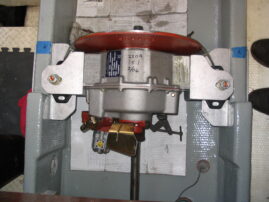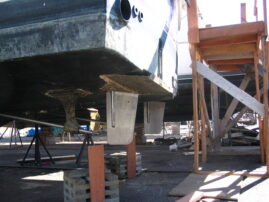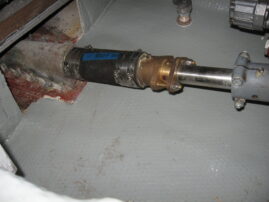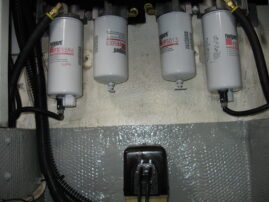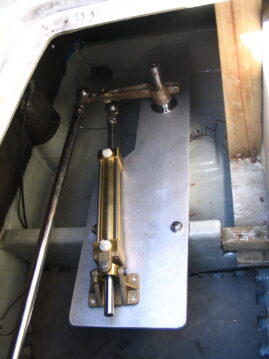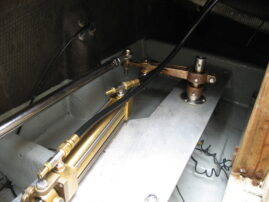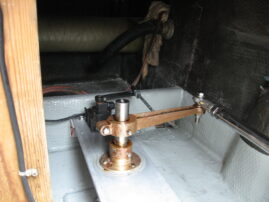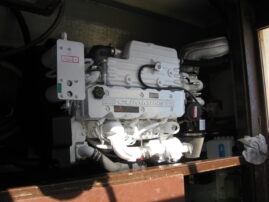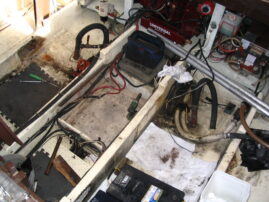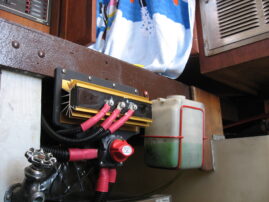About 18 months ago I was approached by the owner of a 36 ft 20 yr old 36 Ft Jersey inquiring about a repower.. After I loaded him up with all of my standard questions about current engines, the condition of the boat and the goals he wanted or expected to end up with after spending at least 80K (maybe more as I have done this too many times and I know what it really costs) to repower his vessel, all the details I’d need to put the repower plan into action…
After looking back at my e-mails and I think we had at least 25 of them with pictures and the like over a 14 month period going back and forth as to “how much is this”, and “what if we did this”, and “how about this”, and “can we do that”, and “how much extra is this”, and if we find this problem”, and etc.. etc.. etc……Actually, all the questions are quite normal and expected.. My feelings are that if you cannot get answers to all your concerns, you better not do it, or at least look elsewhere for some plausible answers—after all, are you the guy spending the bucks?????………..
During the final planning stage, we chose to go with the Cummins QSB 380 as it gave us all the power we needed and offered so must more than the mechanical engines from the decades before. The owner was just plain tired of dealing with the Detroit 8.2’s and knew his boat had the potential of running with any late model sportfisher costing 250K plus.. Even if the job required 100K to upgrade not only the engines, but shafts, steering systems, etc, he knew the boat and this was the best option as he loved the boat and the way she handled.
In the end, we got this job.. During all the planning stages I was quite interested in it because I had heard much about “Jerseys” but never had the opportunity to repower one, so now was our chance to work on a Jersey first hand.. The vessels overall construction was a cut above the typical Bertram’s I have worked on.. Factory glass work was neat and showed quality construction thru out. The hull itself was sanded to gel-coat (more than a decade of bottom paint) and it came out a smooth as a baby’s butt with ZERO flaws or blisters attesting to the quality of the glass work.
After removing the old 8.2’s, and doing a quick clean up, you could tell the builder did an exceptional job on the stringer construction and overall layout by designing the engine room for good access all around.. So many boats of this general size today make it close to impossible to do the simplest maintenance lie changing an impeller as the builder just “stuffs” the engine in there with no concern for service access.
We spent about 3 weeks planning, prepping, fabricating and installing all of the engine/ trans bracketing, We do this our normal way buy starting with doing what ever needs to be done with the prop shafts as this “sets” all the rest. In this case, we upgraded to new AQ 22 1.5” shafts, new bearings and “Seaboard” shaft seals. Then we installed the transmission ONLY as we do all our jigging off of this. Dead accurate and very easy to work around.. Once all bracketing is done for front & rear 4-point eng/trans mounting, the trannies are removed and installed on the new QSB’s and the engines are fully prepped before the actual install——————–That means all the actual harnesses we will use, instruments, fluids, etc are installed in the shop. The digitals gages and throttle interfaces are fully configured as this is so much easier to do here on the shop floor than in the boat. One bad connection and you can loose a day or to on the boat, but in the shop, trouble shooting a fault code on the initial set-up is a piece of cake..
During this phase, the owner decided he wanted to attack his 20 yr old steering system—The single upper station gave “iffy” steering at best and he always felt his rudders were inadequate—they were !! We pulled it all and built new custom SS rudders and installed a new “Seafirst” 2-line hydraulic steering system with new “everything”—What a difference, as steering effort was about ½ as before and low speed control steering was noticeably improved. Also, “he” now wanted a transom door so got with my favorite guy and put in a door that looked “factory”…………
Back to the main job, engines are in and we were now doing all the hook-ups from electrical to fuel to exhaust……..New fully isolated Lifeline AGM’s for the each engine, but we use proven diode isolation so each engine takes care of itself and charges the house too—Fully automatic with NO “1-2-ALL” engine stuff and makes it 100% stupid proof……And off course, we use an “always-on” DVM that measure to TWO decimals at the main station so the operator knows instantly what the charge is on all three separate banks…As I have said in the past, we never let engines “talk to each other” electrically unless we are doing so with intent because of an emergency situation.
A few setbacks along the way but all in all it went according to plan.. As always, boats are boats and thing just happen—Seatrial day was prosponsed after we were done for a couple of months as the owner was traveling overseas…I think the boat was in the yard for 5 months, but overall the job was straight forward.. Seatrial went very well as the 30 K was there but I missed the propping on this one—I was actually overpropped by about 175 RPM as I got 100% at 2850 or so— Oh well, I can’t get’em all right the first time— The owner was leaving for China again so we pulled her, did a “hang & hold”, yanked the props and sent them out for a re-do… The b9oat sat for 3 more weeks in the slip and we pulled her again and installed the re-done props—- Seatrialed and got our 95-98% at 3000+ RPM and saw 31+ K on the GPS.. Not bad, but all the “boat” could handle with good control was 21-24 cruise—it was all just fluff above that…………………………………Dust had finally settled, the owner was very happy and he had zero issues with the project or the cost……Down to Puerto Vallarta early spring so he can use his new Marlin door—wasn’t that the plan from day one, anyway????

